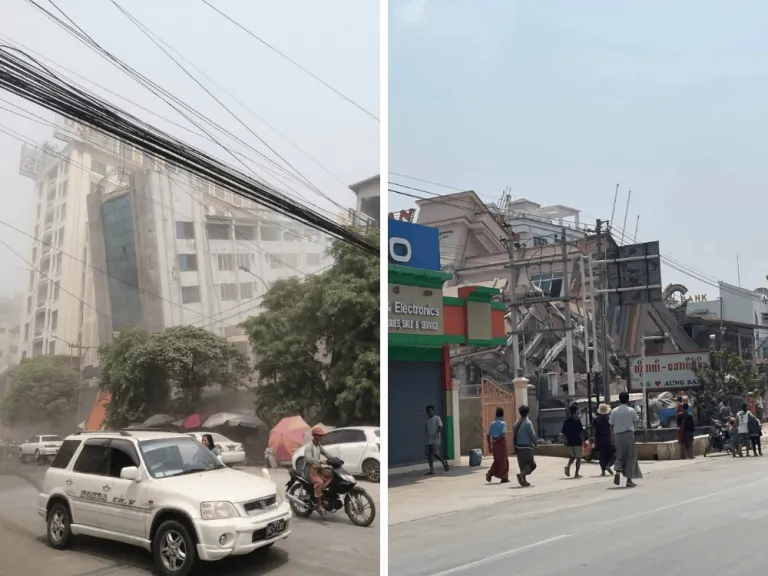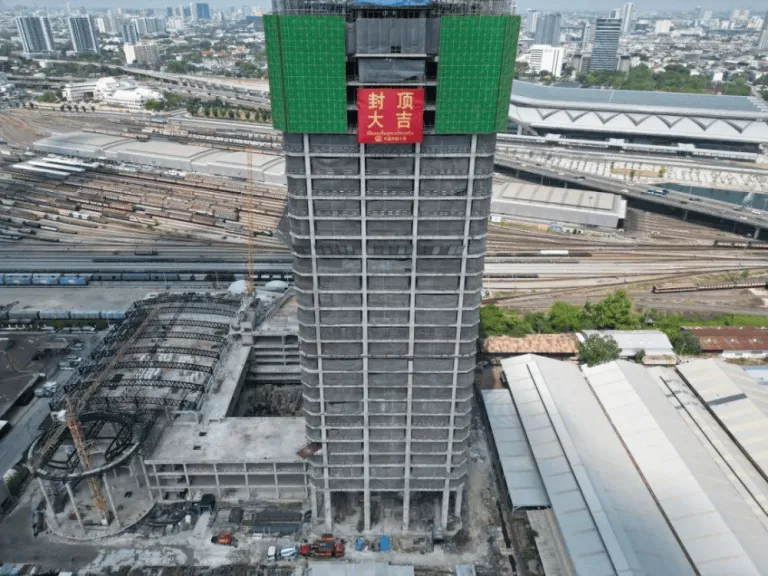Ready for a solo travel?
Myanmar Earthquake: Strong Tremors Cause Building Collapse in Bangkok

On March 28, 2025, a powerful 7.7-magnitude earthquake struck central Myanmar, sending shockwaves across the region. The earthquake, which originated northwest of Sagaing at a depth of 10km, caused widespread damage, with tremors reaching as far as neighbouring Thailand. A 6.4-magnitude aftershock followed shortly after, intensifying the already dire situation, according to the United States Geological Survey (USGS).
Impact on Myanmar and ongoing challenges
 Image credit: jamsShadows4 via X (Former Twitter)
Image credit: jamsShadows4 via X (Former Twitter)
Myanmar experienced the worst of the earthquake’s devastation, with major cities like Mandalay, Naypyidaw, and Sagaing suffering severe damage. Buildings collapsed, roads were destroyed, and ancient landmarks, including temples and pagodas, were left in ruins. The National Museum in Naypyidaw also sustained significant damage. Rescue efforts have been delayed by infrastructure failures and ongoing civil conflict, with the Myanmar junta struggling to provide aid in affected areas. While the exact death toll is still unknown, early reports indicate a high number of casualties.
Bangkok’s earthquake response
 Before Photo: The Great Translation Movement 大翻译运动 via X (Former Twitter)
Before Photo: The Great Translation Movement 大翻译运动 via X (Former Twitter)
The tremors from the Myanmar earthquake were strongly felt in Thailand, particularly in Bangkok. The city saw the collapse of a skyscraper under construction, prompting authorities to declare an emergency zone. Rescue teams immediately began searching for survivors.
 After Photo: thandojo via X (Former Twitter)
After Photo: thandojo via X (Former Twitter)
As a precaution, Bangkok’s metro and light rail services were temporarily suspended, causing major disruptions. While no significant damage was reported in Chiang Mai, the emergency response in Bangkok is ongoing as authorities assess the situation.
Seismic activity in Myanmar and future risks
Myanmar lies along the active Sagaing Fault, an area prone to seismic activity. Historical records show that the region has experienced several major earthquakes, with at least six significant quakes occurring between 1930 and 1956. Experts warn that Myanmar remains vulnerable to further seismic activity, especially considering its outdated infrastructure and lack of earthquake preparedness. Aftershocks continue to impact the region, and it may take months or years for a full recovery.
A call for readiness
The recent earthquake in Myanmar serves as a stark reminder for the Philippines, a country also prone to seismic activity. As Filipinos, we understand the devastating impact of such natural disasters. This event should be a call for everyone, not only for residents in the Philippines but also for Overseas Filipino Workers (OFWs) living abroad, to always be prepared.
Earthquakes can strike at any moment, and being ready—whether at home or in a foreign land—can save lives. The Philippines stands in solidarity with Myanmar, Thailand, and other Southeast Asian countries affected by the earthquake. Together, we must continue to prioritize safety and preparedness in the face of natural disasters.
Published at
About Author
Jennylene Dela Cruz
Subscribe our Newsletter
Get our weekly tips and travel news!
Recommended Articles
Top 10 Post-Breakup Destinations for Healing and Self-Rediscovery 11.11 Seat Sales to Fly to Your Revenge Travel Destination The savings are beyond comparison!
The 2021 Global Korea Scholarship Is Accepting Applications This March Don’t miss this chance!
This 2022 Japan Postgraduate Scholarship Grant Is Now Open for Pinoys You can finally study in Japan for free!
Join the 2022 Korean Festival on 10–11 Sep at Glorietta Activity Center Enjoy traditional activities, games, and performances from K-pop artists!
Latest Articles
Dingalan Travel Guide: Nature Spots to Discover Now Underrated coastal gem in Aurora
What to Eat in Bicol: Iconic Dishes and Treats, and Unique Pasalubong You’ll Love Spice up your foodie adventure with iconic Bicol dishes and must-try pasalubong!
Top Travel Trends in the Philippines for 2025 New spots, tips, and trends
New UK Adventure Park to Visit in Devon and Cornwall Fun countryside escape near London
Ultimate Camarines Norte Travel Guide: Waterfalls, Beaches, and More From surfing to secret waterfalls, Camarines Norte is your next escape!

